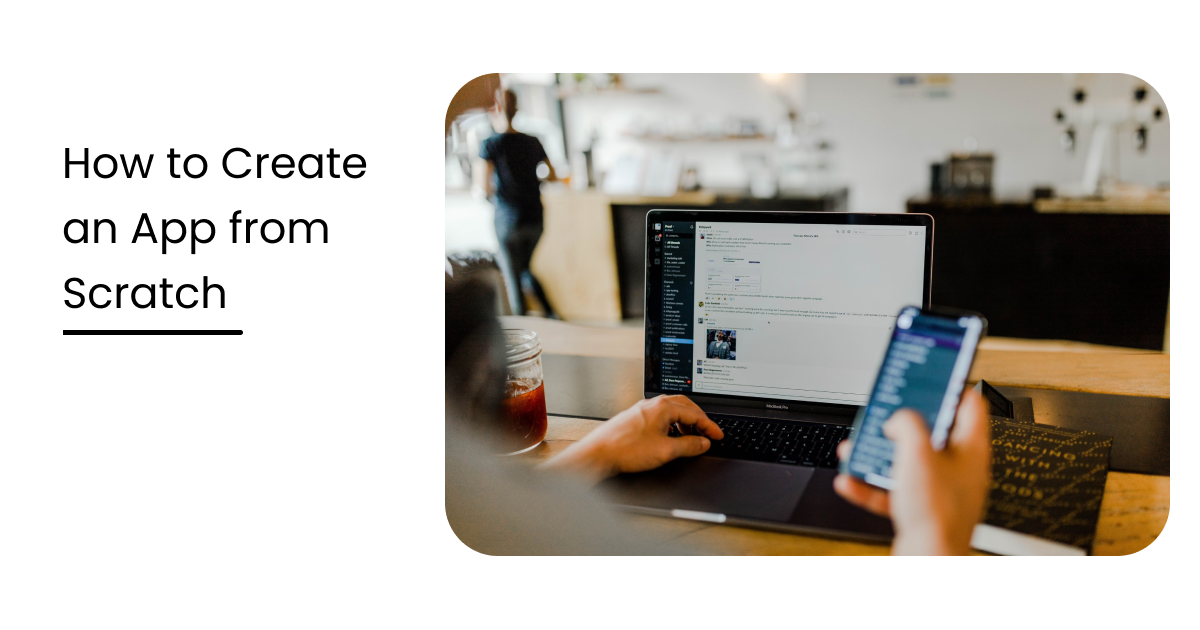So you have this great idea for an app, and you know you’re going to make millions if you just get it developed. What’s the first step? It all starts with validating your idea and creating a solid business plan and design document that guides your team through the app development process, so there are plenty of considerations to take into account before you get started. Here are some tips to help you successfully create an app from scratch.
Choose the Type of Appw
There are a few different types of mobile apps. The first question you should ask yourself is: How do I want my app to interact with its users? Do I want it available for both iOS and Android, or just one of those platforms? Will it have a companion website, or is it strictly meant for mobile use? Now that you’ve determined your platform, you can start thinking about how your app will look.
Research Your Idea
Your idea could be anything, but it should be something you are passionate about. Your app will reflect your personal interests, so if you have a concept or idea that’s been rolling around in your head for some time, you might want to explore whether there’s any demand for it in today’s market. As with all startups, conducting research is a crucial step—especially if your app is based on some groundbreaking technology or has never been attempted before.
Brainstorm on a Concept
Before you start writing code, it’s important to write down a list of features. If you don’t know exactly what you want your app to do, or even if you do but want some direction, there are plenty of brainstorming techniques that can help guide your ideas: mind maps, prototyping sessions with other team members, and wish lists can all help develop a vision for your app.
Select The Platform You Want To Use
Developers have a lot of options when choosing which platform they want to develop on, but if you’re not sure where to start, we recommend picking one that has a large user base (it’s easier to make money when your product is being used). Mobile apps are built for iOS and Android. Since each operating system is designed with different types of devices in mind, keep in mind what kind of smartphone or tablet you want your app available on.
Decide on a Mobile Device Operating System (iOS or Android)
If you want to make money from your app, it has to work on either Apple’s iOS or Google’s Android operating system. While there are alternatives like Windows and Blackberry, they just don’t have as many users. And if no one is using your app, it won’t matter how well-designed it is—no one will download it. All of which means that you should begin with iOS or Android development depending on which phones and tablets you think most people will use.
Prepare the App Name and Icon
First, you’ll need to come up with a name for your app. The name is going to be displayed on every page of your app, so make sure it conveys what your app is about while also standing out and being easy to remember. Write down at least 5 names that you think could work well and see if anyone else likes them or can come up with some better suggestions—you don’t want people who download your app expecting one thing only to find something else entirely!
Write the Description and Keywords
Creating an app without a plan is like setting off on a trip without a map. You don’t know where you’re going, but you have plenty of time to figure it out. In both cases, that strategy rarely leads anywhere good. Before you start creating your app, take some time to clarify its purpose and then write down those clarifications in clear terms so others can understand them, too. What exactly is your app? Who will use it? What problem does it solve?
Set the Price
Pricing is a huge deal. If you price too high, you leave money on the table; if you price too low, you put your potential profit at risk. When determining how much your app should cost, it’s best to start by considering where in its life cycle it sits.
Publish Your App On Google Play Store Or Apple Store
The first step is pretty simple. You’ll need to create a Google Play Developer account or Apple Developer account, depending on which platform you’re creating your app for. The process is almost identical—you’ll just need different credentials and need to agree to different terms of service.
Target Other Platforms to Maximize Exposure
It’s easy to think of building an app as a one-off project: You create your iPhone app and let it sit on Apple’s App Store, waiting for someone to stumble upon it. It’s more effective—and much more satisfying—to think of your app as another page in your company’s larger marketing strategy.






